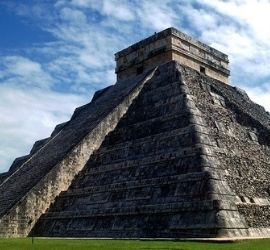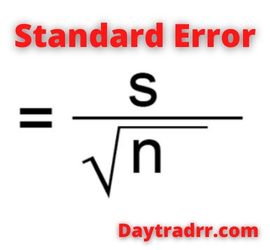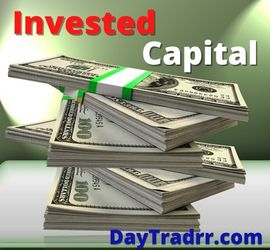Current vs. Long-Term Assets
The two main types of assets appearing on the balance sheet are current and non-current assets. Current assets on the balance sheet are the assets and holdings that are likely to be converted into cash within one year. Companies rely on their current assets to fund ongoing operations and pay current expenses such as accounts payable. Current assets will include items such as cash, inventories, and accounts receivables. Non-current assets are long-term assets that have a useful life of more than one year and usually last for several years. Long-term assets are considered to be less liquid, meaning they can’t be easily liquidated into cash.
Current assets
Current assets are the key assets that your business uses up during a 12-month period. They will likely not be there the next year. They include the following:
- Cash in Checking: Any company’s primary account is the checking account used for operating activities. This is the account used to deposit revenues and pay expenses.
- Cash in Savings: This account is used for surplus cash. Any cash for which there is no immediate plan is deposited in interest-earning savings account so that it can earn interest.
- Cash on Hand: This account is used to track any cash kept at retail stores or in the office. In retail stores, cash must be kept in registers in order to provide change to customers. In the office, petty cash is often kept for immediate cash needs that pop up from time to time.
- Accounts Receivable: If you offer your products or services to customers on store credit, then you need this account to track the customers who buy on your dime.
- Inventory: This account tracks the products you have on hand to sell to your customers. The value of the assets in this account varies depending upon the way you decide to track the flow of inventory into and out of the business.
- Prepaid Insurance: This account tracks insurance you pay in advance that’s credited as it’s used up each month.
(Source: investopedia.com & dummies.com)
Examples of Long-term Assets
Long-term investments
These include some investments in stocks and bonds of other corporations, a company’s bond sinking fund, the cash surrender value of life insurance policies owned by the company, real estate awaiting to be sold, etc. Long-term investments are those you’re going to hang onto for more than 12 months. A house you buy to flip in a few months wouldn’t count, but if you plan to wait a few years it would qualify. Stocks and bonds your company plans to keep for more than a year fit this category too. This class of assets doesn’t include things you use in your business operations. The land you buy for a new factory is a fixed asset, for instance, but it’s not a long-term investment. These investments go on the balance sheet separately from other long-term assets.
Property, plant, and equipment
This classification includes land, buildings, machinery, equipment, vehicles, fixtures, etc. that are used in the business. These assets are reported at cost and the contra asset accumulated depreciation is also included. Fixed assets are things you buy for your company’s internal use rather than resale. Examples in this accounting category include land, buildings, cars, machinery, and computers. The fixed-asset entry doesn’t include assets such as office supplies or raw materials that you’ll use up within a year. You record fixed assets on your company’s balance sheet at the purchase price, marked down over time for depreciation.
Intangible assets
These include trademarks, patents, customer lists, goodwill, etc. that were acquired in a transaction. Intangible assets are a different kettle of fish. They include such non-physical property as domain names, copyrights, trademarks, employment contracts, non-compete agreements, and customer lists. They also include goodwill – the intangible benefits of having a positive reputation. You only record the value of intangible assets when you buy them. Suppose rather than starting your own plumbing business, you buy an established local company. Part of the purchase price goes to intangibles, such as the company’s goodwill and trademarks. If you start your own plumbing business and create your own trademarks, you don’t assign them any value as assets.
Deferred charges
This category is used for items that do not fit into the other long-term asset classifications. A deferred charge is a payment in advance. This can include anything from paying your supplier before delivery to paying a lump sum to your insurer to cover the next 12 months. If the period covered is long enough, the deferred charge qualifies as a long-term asset. Typical deferred charges include prepaid rent, prepaid insurance, and prepaid advertising. You record the initial payment as an asset on the balance sheet. If you pay $60,000 in rent for the next two years, that’s an asset because it guarantees you the use of the premises. Each month, you reduce the asset account and record that month’s rent as an expense on the income statement. Otherwise, the huge expense of the initial payment would make your business look much worse than it is.
(Source: accountingcoach.com & smallbusiness.chron.com)
Depreciation of Long-Term Assets
Depreciation allows companies to expense a portion of long-term operating assets used in the current year. It is a non-cash expense that increases net income. But, it also helps to match revenues with expenses in the period in which they are incurred. Capital assets, such as plant, and equipment (PP&E), are included in long-term assets. Except, that is, for the portion designated to be depreciated (expensed) in the current year. Long-term assets can be depreciated based on a linear or accelerated schedule and can provide a tax deduction for the company. Analysts will often consider a company’s earnings before the depreciation of assets (e.g. EBITDA). This can be a key factor in understanding their financial situation. This is because depreciation can cloud the true value of long-term assets on their effect on a company’s profitability.
As with most types of assets, long-term assets need to be depreciated over the course of their useful life. It is because a long term asset is not expected to generate a benefit for an infinite amount of time. In an automobile factory example, machines will become old and may experience breakdowns or become obsolete. There are many accounting treatments a company can use to depreciate its assets. These include the double-declining balance method, the units of production method, or the straight-line depreciation method. It is important to note that depreciation is not considered a cash expense for the company. Depreciation amounts that are incurred for the purposes of depreciating fixed assets provide a tax shield for the company’s income. Depreciation is subtracted from EBITDA to calculate taxable income, and then tax expense.
(Source: investopedia & corporatefinanceinstitute)
Limitations of Long-Term Assets
Long-term assets can be expensive. They require large amounts of capital that can drain a company’s cash or increase its debt. It can be difficult to analyze a company’s long-term assets. Investors often will not see their benefits for a long time, perhaps years to come. Therefore, investors are left to trust the management team’s ability to allocate capital effectively. In general, investors should take a holistic view of a company with respect to its long-term assets. It’s best to utilize multiple financial ratios and metrics when performing a financial analysis of a company.
Fixed Assets
Long-Term Assets are often confused with Fixed Assets. Long-Term Assets refer to assets that the company doesn’t intend or is unable to convert into cash within one year. By contrast, Fixed Assets refer to tangible physical assets with a useful life longer than one year. Fixed Assets is also known as Property, Plant & Equipment, or PP&E. Fixed Assets is just one of several Long-Term Assets. So while Long-Term Assets include Fixed Assets, the two are not synonymous.
Real-World Example of Long Term Assets
Consider Exxon Mobil Corporation as of September 30, 2018.
- Exxon’s long-term assets include investments, and long-term receivables totaling $40.427 billion for the period.
- Property, plant, and equipment totaled $249.153 billion, which includes the company’s oil rigs and drilling machinery.
- Other assets including the company’s intangible assets totaled $11.073 billion.
- Exxon’s total long-term assets for the period equaled $300.653 billion or ($40.427 + $249.153 + $11.073).
(Source: investopedia.com)
Final Words
Non-Current Assets such as PP&E and Intangible Assets form the backbone of every company. These assets, such as computers, office furniture & fixtures, trademarks, and patents, enable businesses to sell their products. Companies that have significant Long-Term Assets driven by PP&E or intangible assets are generally capital-intensive. That’s because it takes lots of capital to acquire or these assets. A PP&E of $100mm on the Balance Sheet means the company had spent $100mm or more to acquire it. This means the business needs to spend a lot of money in order to make sales and generate profits. All else equal, businesses that can generate the same earnings with fewer Long-Term Assets are superior. They are run more efficiently and can earn profits with fewer capital investments. All else being equal, investors prefer to invest in non-capital intensive businesses.
(Source: lumovest.com)
Day trading is simply buying a stock or security, then, quickly selling or closing out the position. Usually, the position is closed within a single trading day. Ideally, a day trader wants to “cash-out” by the end of each trading day. They want no open positions to avoid the risk of losses by holding security overnight. Day trading is not for everyone and carries significant risks. It requires an in-depth understanding of how the markets work and various strategies for profiting in the short term. Short term profits require a very different approach compared to traditional long term, buy and hold investment strategies.
 Long-term assets are assets, whether tangible or non-tangible, that will benefit the company for more than one year. They are lso known as non-current assets. Long-term assets can include fixed assets such as a company’s property, plant, and equipment. But, they can also include other assets such as long term investments, patents, copyright, franchises, goodwill, trademarks, and trade names, as well as software. They are reported on the balance sheet and are usually recorded at the price at which they were purchased. Therefore, they do not always reflect the current value of the asset. Long-term assets can be contrasted with current assets. Current assets can be conveniently sold, consumed, used, or exhausted through standard business operations with one year.
Long-term assets are assets, whether tangible or non-tangible, that will benefit the company for more than one year. They are lso known as non-current assets. Long-term assets can include fixed assets such as a company’s property, plant, and equipment. But, they can also include other assets such as long term investments, patents, copyright, franchises, goodwill, trademarks, and trade names, as well as software. They are reported on the balance sheet and are usually recorded at the price at which they were purchased. Therefore, they do not always reflect the current value of the asset. Long-term assets can be contrasted with current assets. Current assets can be conveniently sold, consumed, used, or exhausted through standard business operations with one year.



